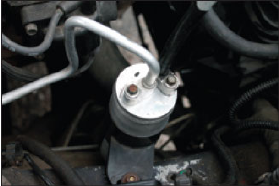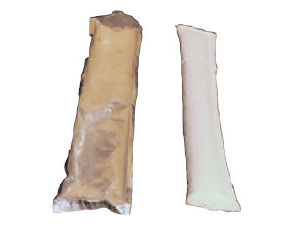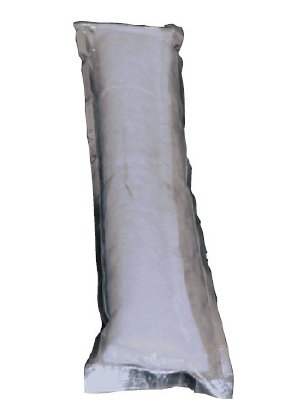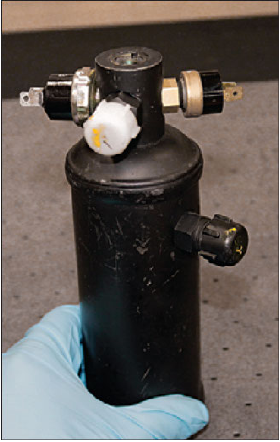Receiver dryers are used on vehicles that have a thermal expansion valve as a metering device. The main operation of the receiver dryer is covered in chapter The receiver dryer is located in the high side of the AC system at some point after the condenser and before the thermal expansion valve.
Many late-model vehicles have begun combining the receiver dryer into the condenser. This has become popular because it allows the manufacturer to weld the connection, which reduces the leak potential of the receiver dryer. The disadvantage to this design is the dryer assembly can’t be serviced without replacing the condenser.
Some manufacturers allow for the desiccant pack to be replaced by removing a plug from the bottom of the dryer housing.

The receiver dryer is used on systems with a thermal expansion valve and are located at some point in the high side of the system between the exit of the condenser and the inlet of the evaporator core. The lines that connect to this dryer are held in place with bolts that should be torqued during

The replaceable desiccant pouch is shipped in a sealed bag to prevent the unit from absorbing moisture during storage and

AC systems that use a dryer that is combined with the condenser may use a replaceable desiccant pouch. These systems would have a removable plug at the bottom of the condenser to allow access to the replaceable desiccant

New receiver dryers and accumulators come from the parts supplier with caps installed at the ports that connect to the lines and hoses. These caps are used to keep the vacuum trapped in the device, which prevents any contamination from
The receiver dryer should be installed as the last step in the service routine so the desiccant will not draw an excessive amount of moisture from being left open to the atmosphere for a long time.
The receiver dryer is shipped in a vacuumed state and is sealed with caps that must be removed prior to installation. It is important to remember to add some refrigerant oil to the receiver dryer prior to installation. The same high-quality installation and sealing techniques should be followed when installing the receiver dryer as the ones that were discussed above, covering lines, hoses, and accumulator dryers.